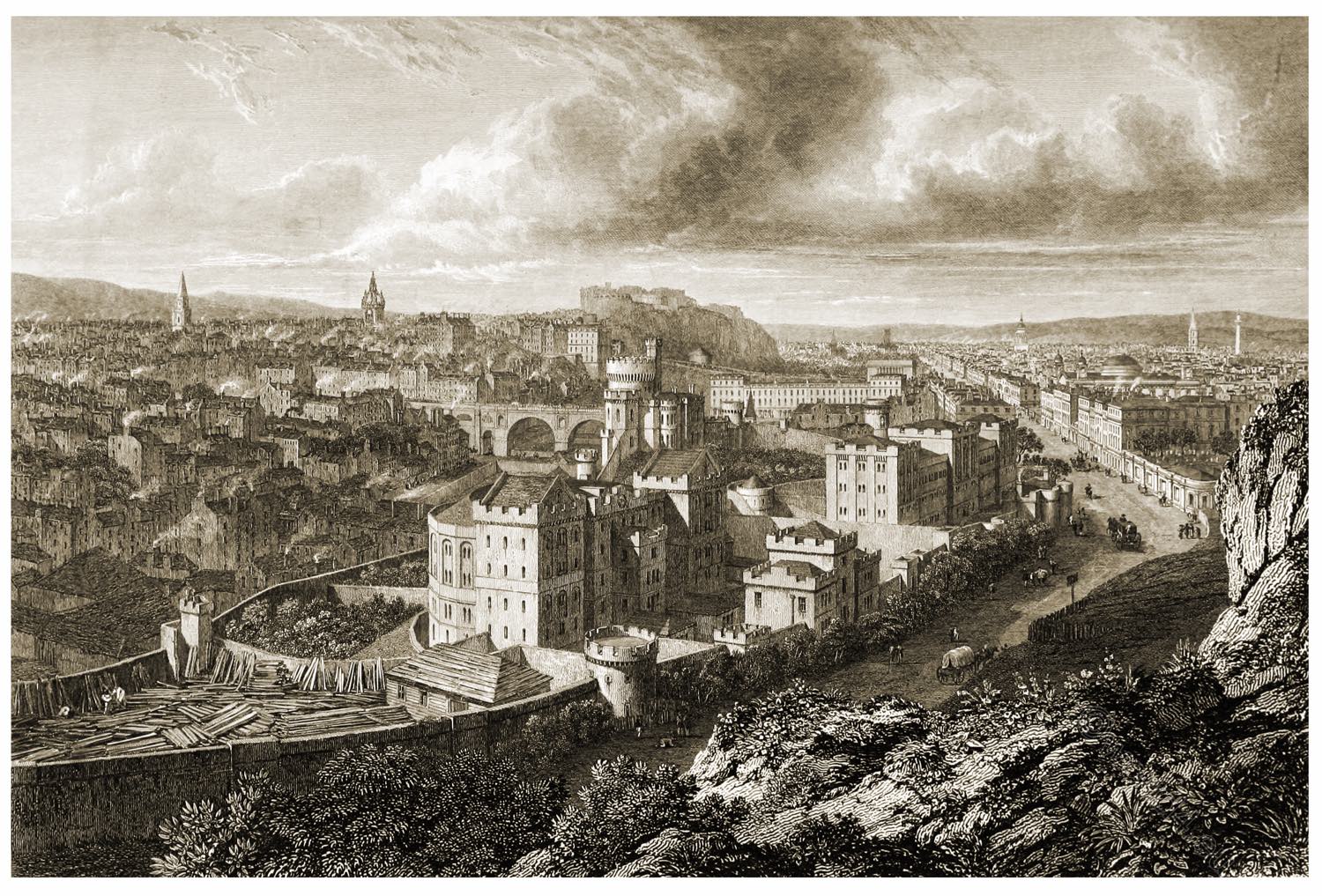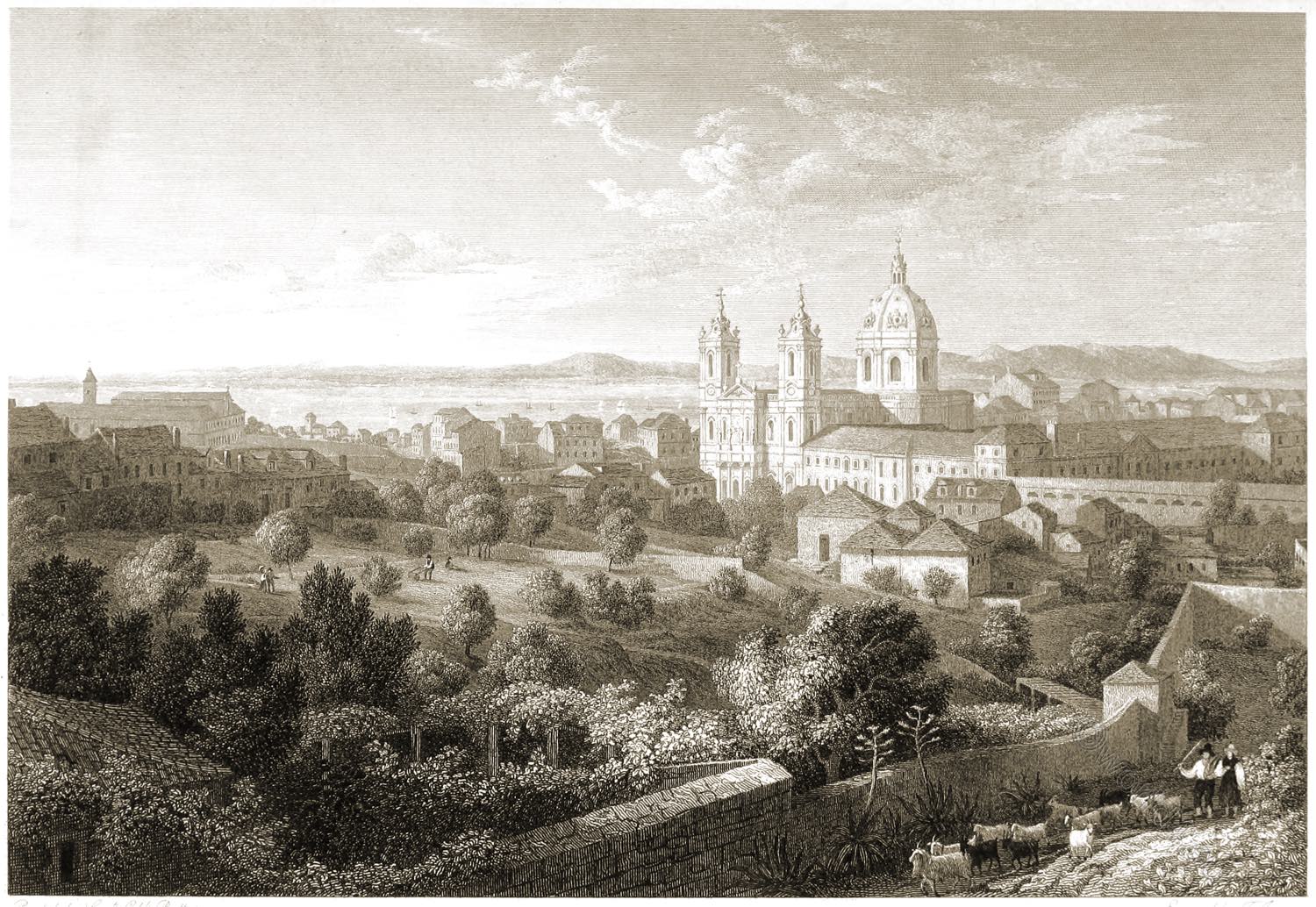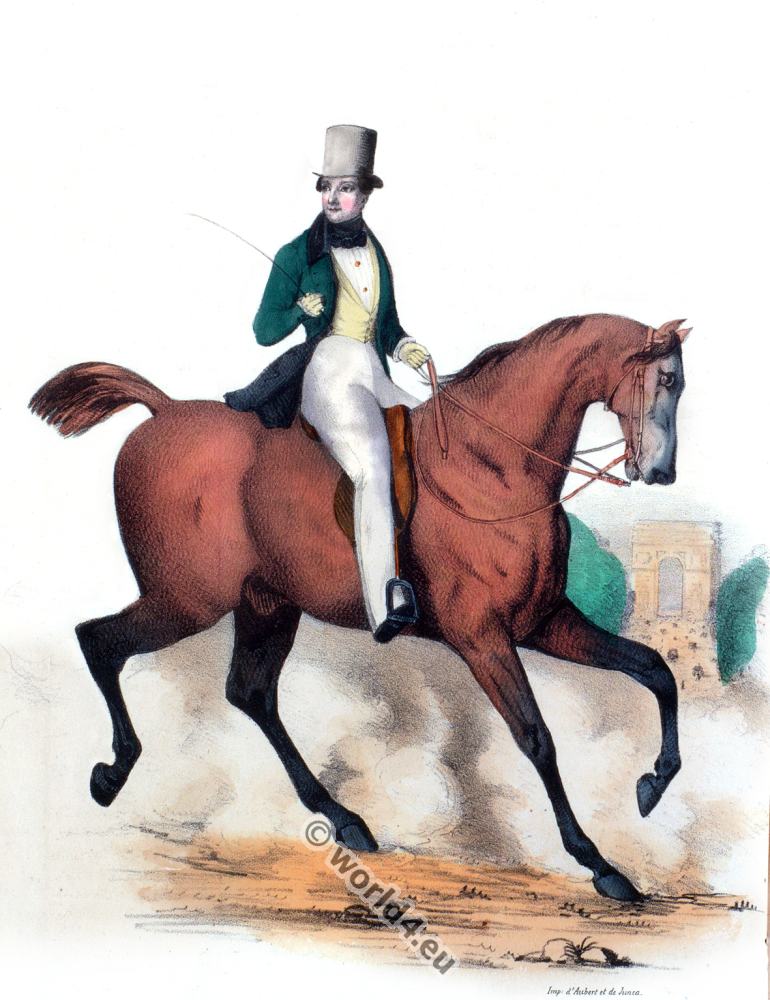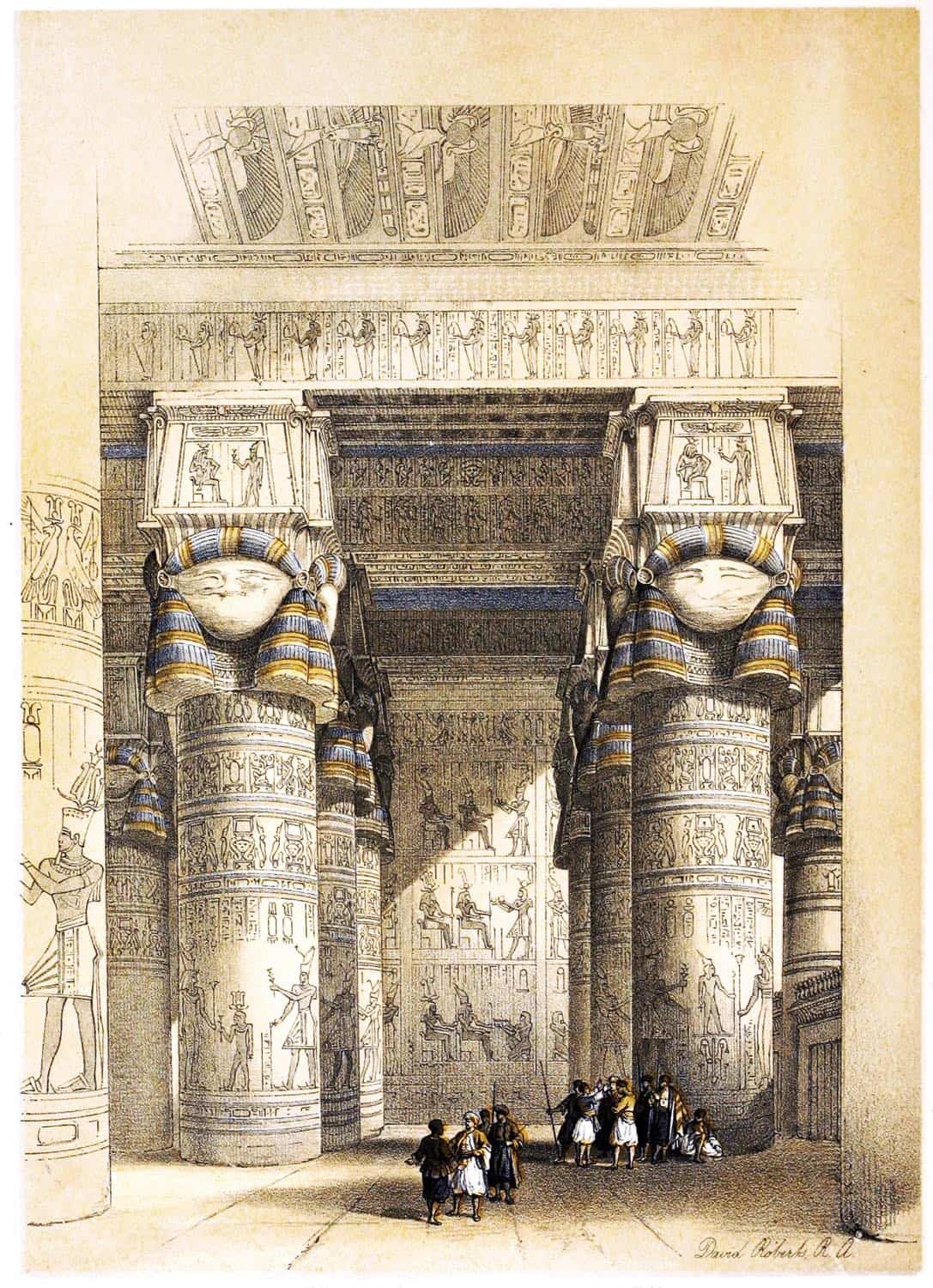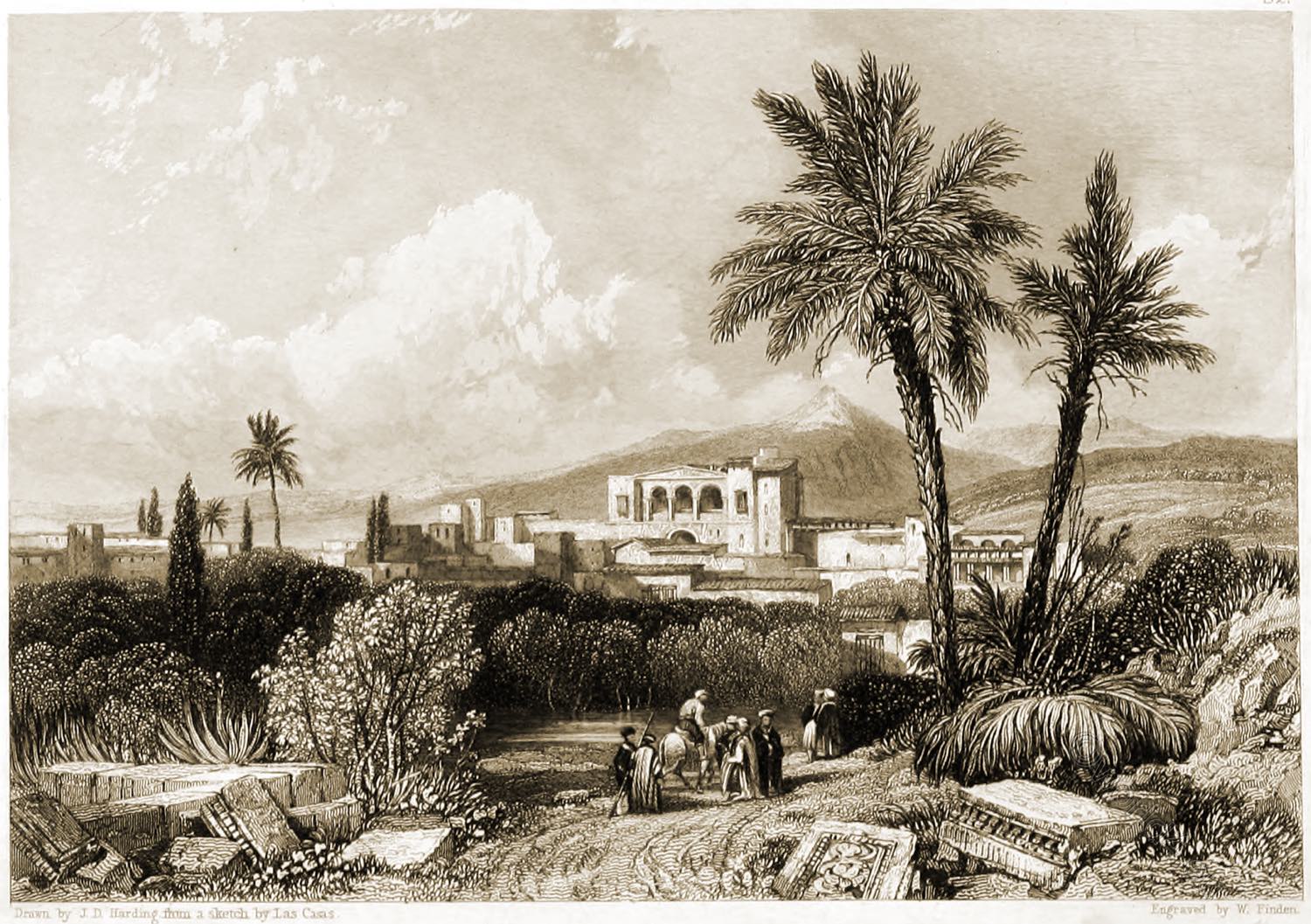
KITTIM — CYPRUS. VIEW OF LARNECA.
by Thomas Hartwell Horne.
Engraved by W. Finden after a picture by J. D. Harding, from a View taken on the spot by M. Cassas.
The island of Cyprus was known to the Hebrews under the name of Chetim (or Kittim), from Kittim the son of Javan, the son of Japhet, the son of Noah (Gen. x. 4.); who, according to the Jewish historian Josephus, in the division of territories, had the first possession of this island. Hence it followed that all islands and maritime places were called Chittim by the Hebrews.
Josephus supports this opinion by shewing that Citium is a name corrupted from that of one of the cities of the island, which is derived from the appellation Chetim (or Kittim) borne by the whole island. He adds, that it was called Citius by those who use the language of the Greeks, and has not by the use of that dialect escaped the name of Cethium. 1)
Citium was one of the most ancient cities in the island of Cyprus it was founded by a Phoenician colony, and was celebrated as the birthplace of Zeno, the founder of the Stoic sect of philosophers, and also of the eminent Greek physician Apollonius, the disciple of Hippocrates.
At the close of the Persian war, Citium was besieged and captured by the Athenian forces under Cimon, who died here in consequence of a wound which he had received during the siege.
It is quite uncertain when this city was destroyed: the abbé Mariti believes that event did not take place later than the beginning of the third century.
There is every reason to conclude that the ancient city extended from the port all the way to the modern town of Larneca or Larnic, not only from the etymological meaning of its name (which signifies & place of tombs), but especially from the extensive sepulchral remains which occupy a considerable portion of the territory on which the modern town is situated.
Our view of Larneca is taken from the house of the Venetian consul. The surrounding country is perfectly naked and rugged, and its climate is sultry and unwholesome. The consuls for the different European nations reside here, and their houses are fitted up in a handsome style.
With the exception of some patches of verdure in what are called the gardens of some of the houses, the territory around is destitute of shade, and the ground is parched with heat.
1) Jewish Antiquities, book i. ch. 7. (al. 6.) Dr. Cramer’s Geographical Description of Asia Minor, vol. ii. pp. 379, 380. Dr. Clarke’s Travels, vol. iv. pp. 36—42. Carne’s Letters from the East, p. 437.
Source: Landscape Illustrations of the Bible, consisting of views of the most remarkable places mentioned in the Old and New Testaments, from original sketches taken on the spot engraved by W. and E. Finden, by Thomas Hartwell Horne (1780-1862), William Finden (1787-1852), Edward Francis Finden (1791-1857), Joseph Mallord William Turner (1775-1851), Bartolomé de las Casas (1474-1566). London: John Murray: Sold also by Charles Tilt, 1836.
Continuing
Discover more from World4 Costume Culture History
Subscribe to get the latest posts sent to your email.

